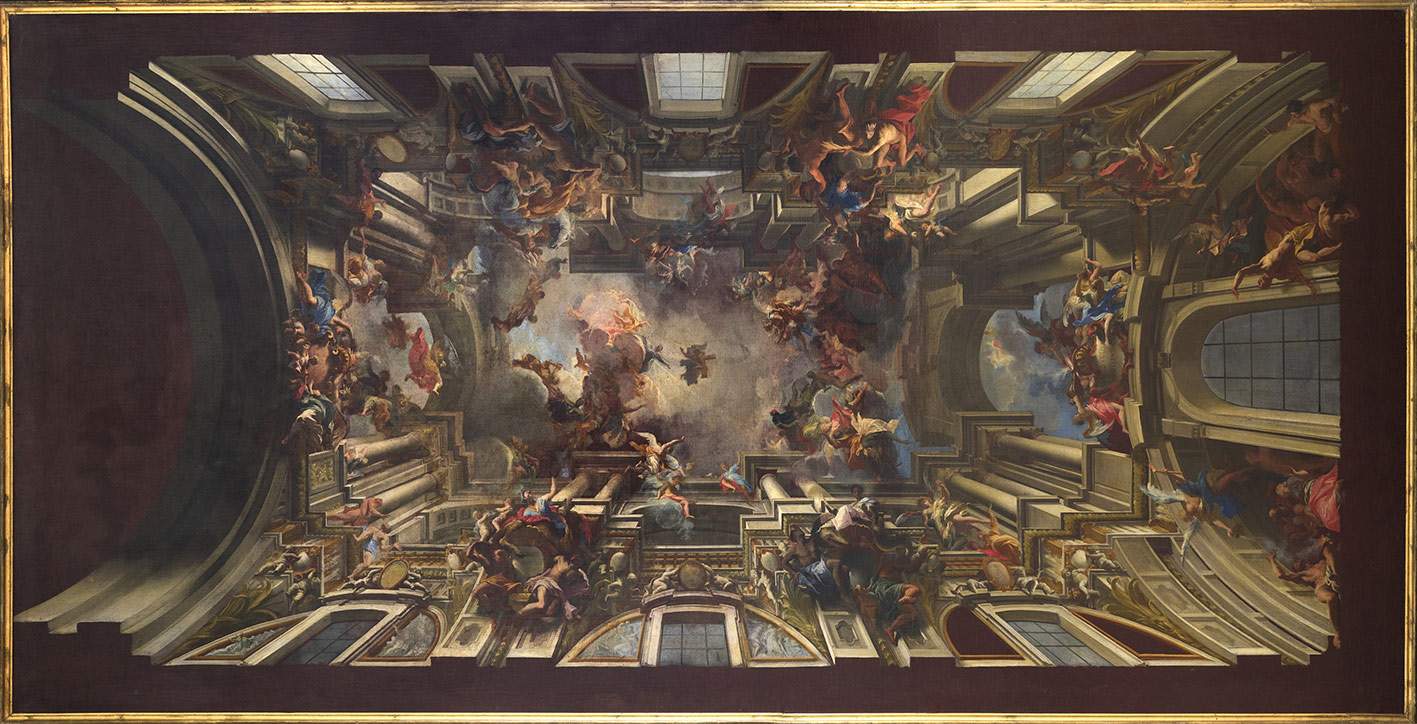In Rome, at Palazzo Barberini, on the occasion of the study day "Conjuring the Fake with the Real. Andrea Pozzo: theory and praxis in the architectural design of St. Ignatius, scheduled for Friday, December 3, 2021 in the church of St. Ignatius, two important sketches by Andrea Pozzo (Trent, 1642 - Vienna, 1709) made for the vault and for the mock dome of St. Ignatius will be exceptionally exhibited. The exhibition runs only from Nov. 30 to Dec. 5 and is curated by Dario Aureli, Antonio Camassa, Alessandro Cosma and Giovanna Spadafora.
In 1685, Andrea Pozzo painted inside the church of St. Ignatius of Loyola in Rome a canvas that evokes the presence of a real dome, one of the emblematic examples of the level reached in those years in the field of illusory representation. Also in St. Ignatius, between 1691 and 1694, the artist frescoed the vault of the nave with the complex and grand Allegory of the missionary work of the Society of Jesus. The sketches for the two works, which came from the Roman Jesuit College, were purchased by the state in 1895 and are now preserved in Palazzo Barberini.


The sketch for the mock dome, (c. 1685, 100 x 95 cm) constitutes the model used by Pozzo to convince the Rector of the Collegio Romano, Father Silvestro Mauro, of the goodness of the illusionistic effect. The multispectral investigations conducted by Antonio Camassa and Giuseppe Fabretti of the Central Institute for Restoration made it possible to clarify how the model was also essential for the setting of the design on the final work and to specify the execution technique of the painter, who used tracings of vegetable charcoal drawn with the help of a string, while the most minute details (such as the capitals) were made with the help of a metal stylus. Investigations also revealed characters that are no longer visible today (AP F), perhaps the painter’s signature, confirming what was already reported in a 19th-century inscription on the back of the canvas: “Original sketch of the cuppola of St. Ignatius in Rome, painted in 1685 by the f.° Andrea Pozzo of the Society of Jesus. This Painting in the South Church has totally disappeared. 1884”. By that time, in fact, the dome, must have been completely blackened by the carbon black of the candles and thus substantially invisible.
The large sketch relating to the vault, on the other hand, is perhaps to be recognized in the work that, according to biographer Leone Pascoli (1736), the painter exhibited in the Hall of the Collegio Romano “to public view and universal censure.” Again, investigations have enabled a better understanding of the spatial construction used by Pozzo for his complex composition. Pozzo’s two sketches will be accompanied by the projection of a video made by Antonio Camassa and Matteo Flavio Mancini (Università degli Studi Roma Tre), which presents the results of multispectral investigations carried out on the canvases and the geometric layout of the works in comparison with the final realizations painted by Pozzo in the church of Sant’Ignazio.
 |
| Rome, two sketches by Andrea Pozzo for the St. Ignatius vault on display at Palazzo Barberini |
Warning: the translation into English of the original Italian article was created using automatic tools. We undertake to review all articles, but we do not guarantee the total absence of inaccuracies in the translation due to the program. You can find the original by clicking on the ITA button. If you find any mistake,please contact us.